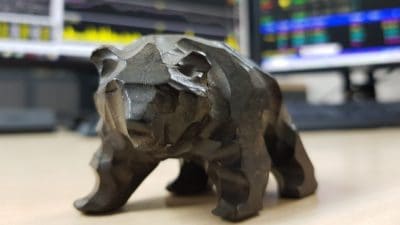Shares of Glencore (LSE: GLEN) have been decimated over the past six months. The global rout in commodity markets has weighed on the highly leveraged company more than most. Glencore’s shares have fallen 60% during the past six months excluding dividends.
Such declines are bound to attract value-oriented investors, who are always on the look out for unloved junk. Indeed, I must admit that I’ve been tempted to take a position after Glencore’s recent performance.
However, while Glencore looks cheap now, I’m staying away from the company for the following reason.
A classic mistake
Glencore has made one huge, rookie mistake during the past five years. The company ploughed money into its expansion at the top of the commodity supercycle, paying top dollar to acquire then-peer Xstrata.
As any seasoned investor will tell you, the key to successful investing is to buy low and sell high. Unfortunately, as research as shown, most investors tend to do the opposite, buying high and selling low, which erodes wealth and returns over time.
And it seems as if Glencore has fallen into this trap. Only a year after Glencore acquired Xstrata, the company wrote down the value of its acquisition by $10bn. Then, last year Glencore paid $1.6bn for Africa-focused oil producer Caracal Energy. But last month, Glencore revealed that it was writing down the value of Caracal by $790m, as low oil prices weighed on asset values.
Glencore is also selling a number of other assets to try and improve its balance sheet.
The group is being forced to make these sales as part of management’s effort to reduce the company’s $30bn debt pile. Yesterday, Glencore announced that it was planning to sell the firm’s Australian copper mine in Cobar, New South Wales, and its Lomas Bayas copper mine in Chile.
Fire sale
“A fire sale” is the only way to describe Glencore’s decision sell these assets. Since the beginning of 2011 the price of copper has fallen by 47% and now sits at a six-year low. So Glencore really is “selling low”.
A recent sale by Anglo American shows what sort losses Glencore could be facing by selling these assets at the bottom of the cycle. Anglo American recently sold its Mantoverde and Mantos Blancos mines in Chile for $300m, rising to $500m if the copper price goes up. That’s an uplift in value of 67%.
It’s a trap
One of the most difficult parts of value investing is avoiding value traps.
However, value traps are difficult to spot and finding them isn’t an exact science. More often than not, investors find themselves being sucked into a value trap without realising it.
Still, value traps usually exhibit three key traits, one of which is the destruction of shareholder value through the misallocation of capital and poorly timed acquisitions. It’s pretty clear that Glencore is guilty of this.
What’s more, with a $30bn debt overhang the company might be forced to sell off more assets at rock-bottom prices to appease creditors. Although it should be said, Glencore’s creditors have reassured shareholders that they aren’t planning to pull the plug on the company anytime soon. Nevertheless, in this market nothing is certain.
Overall, it could be wise to stay away from Glencore for the time being.







